2022-2023 PRAx Student Fellows
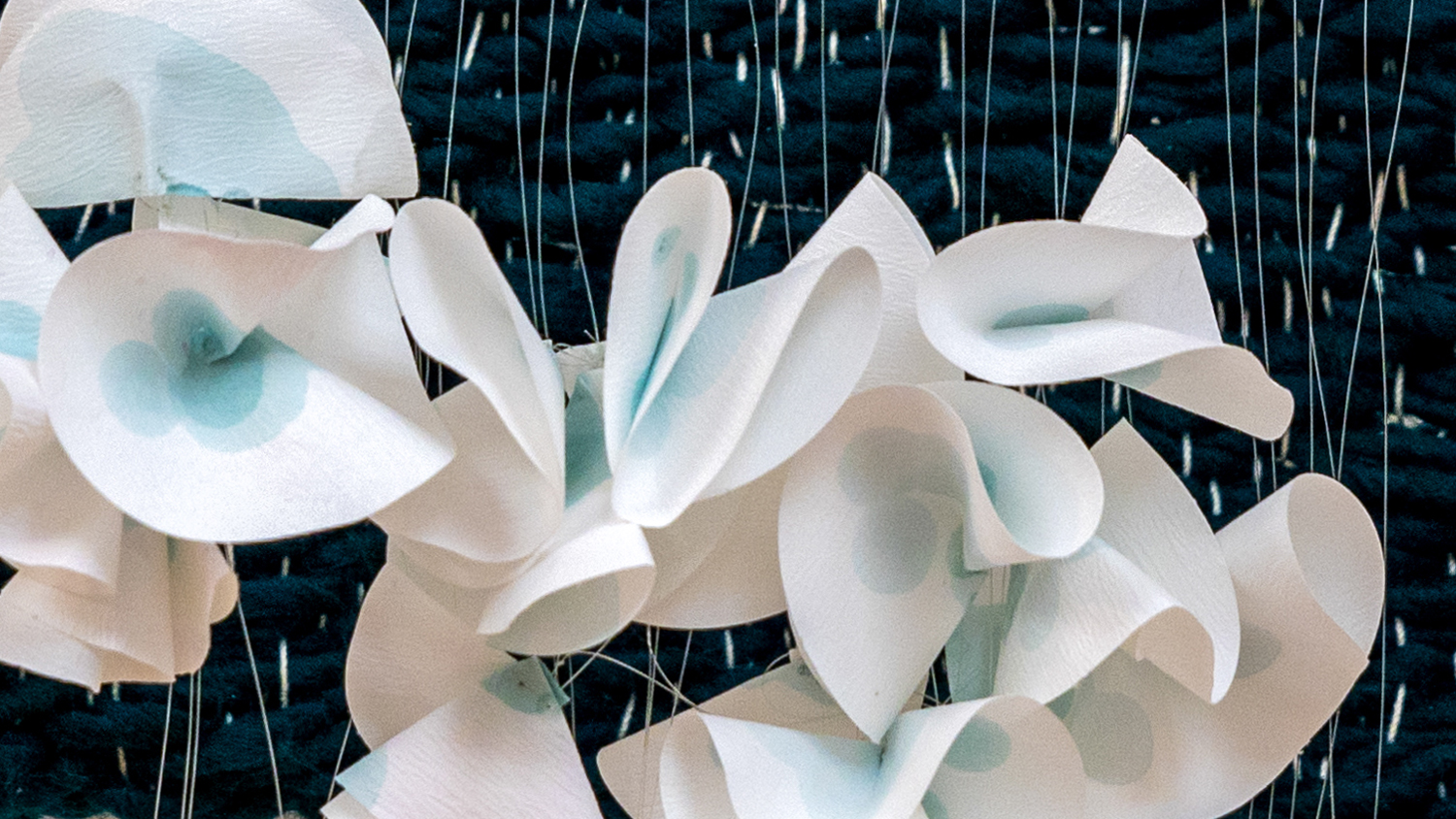
In 2022–2023, eleven graduate and undergraduate students were awarded fellowships to participate in this year-long program that supported creative work at the intersection of art and science. As they worked to develop their projects, students met with two mentors— one experienced in creative practice and one experienced in scientific research. In addition, they participated in a series of workshops and professionalization sessions acquiring skills that will benefit them throughout their professional and personal lives. The fellowship culminated in “Confluences,” an exhibition at The Little Gallery on May 25, 2023.
This pilot fellowship program was launched and coordinated by the OSU Arts-Sci Faculty Group. Due to rising student interest in interdisciplinary work, the program has since expanded to accommodate fellows interested in four areas: Art+Science, Humanities+Science, Film+Science and Art+Engineering. Since 2023, the program has been coordinated by PRAx and supported by the Arts-Sci Faculty Group. Sponsors now include seven OSU colleges, multiple arts and humanities units on campus, as well as community and cultural organizations. We are grateful to all our partners and the fellows listed below for their work inaugurating this bold program of cross-disciplinary conversation and student support.
2022-2023 PRAx Student Fellows
Undergraduate

Svea Bruslind created a project motivated by the question “How do bees see the world?” It’s long been known that bees can see in color as well as in ultraviolet, and more recently it’s been discovered that flowers have UV-reflecting signals present on their petals. She used an adapted digital photography technique to capture the UV reflectance of flowers as a way to simulate bee vision. By capturing images in the morning, afternoon and evenings, she allowed us to take a bee’s-eye view of a single garden scape throughout the day.
Disciplines: Zoology, Photography; Honors College
Mentors: Gail Langellotto, Jasna Guy

Grace Holmes developed a portfolio of paintings connected with paleoceanography research that relies on Foraminifera species. Foraminifera are microscopic shells made of calcium carbonate whose isotopes can be used to reconstruct the temperature and other sea-surface conditions when the shell was alive. Her pieces highlighted the importance of Foraminifera by referencing the six most common species found near the Oregon Coast as well as the fieldwork involved in collection.
Discipline: College of Earth, Ocean, and Atmospheric Sciences; Honors College
Mentors: Jennifer Fehrenbacher, Sally Finch

Liana Kruger-Moore's project focused on the differences between urban and rural sound environments and their effects on wildlife, specifically wild birds. To increase empathetic awareness of the growing problem of noise related to human activity, she composed a musical work using recorded audio from both remote rural and urban areas. Listeners were able to experience first-hand the contrasting soundscapes and the distressing intensities of noise pollution.
Discipline: Animal Science, Music; Honors College
Mentors: Jamie Cornelius, Dana Reason

Cassidy "Cat" Smith created illustrations of animals interacting with different features of their environments. Learning how animals behave in a variety of situations and environments will help us better understand how we can help ensure they have the resources they need in a rapidly changing world. To compose her pieces, she studied trail cam footage from sites at the Willamette River and the man-made pond by the John L. Fryer Aquatic Lab as well as footage collected by graduate student Alyssa Eklund, whose research focused on a fallen log in H.J. Andrews Experimental Forest.
Discipline: Zoology
Mentors: Ivan Arismendi, Jerri Bartholomew
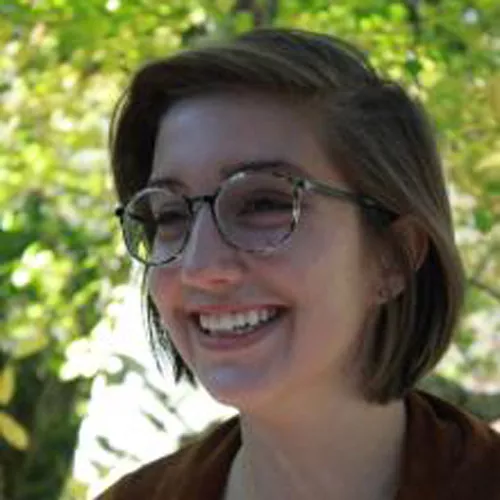
Olivia Quiesser used data collected from growth measurements and color readings of the fungus Chlorociboria aeruginascens to design and create two weavings. In one weaving, the growth measurements were converted into binary code and used as a simple pattern. A second weaving reflects the three-dimensional system used to measure color—lightness, saturation and hue.
Discipline: Bioresource Research; Honors College
Mentors: Seri Robinson, Joan Truckenbrod
Graduate
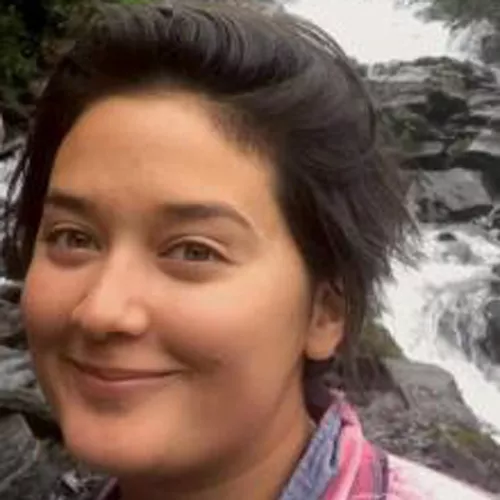
Aliya Jamil’s installation invited viewers to contemplate the shifts we are observing in oceanic boundaries and potential impacts on the entire biosphere. Her piece used blue and green inks to represent the effects of warming temperatures and changing circulation patterns on phytoplankton populations. Despite being some of the smallest lifeforms in the ocean, phytoplankton are perhaps one of the most important because they facilitate ocean carbon sequestration and serve as the base of the entire marine food web. The changes we’re seeing—away from large phytoplankton towards smaller species—can ultimately lead to devastating impacts on fish, seabirds, whales and even us. As humans moving through the world, it is difficult to grasp that our very existence is in part dependent on these photosynthetic organisms living at such small scales.
Discipline: Ocean Ecology & Biogeochemistry
Mentors: James Fox, Leah Wilson
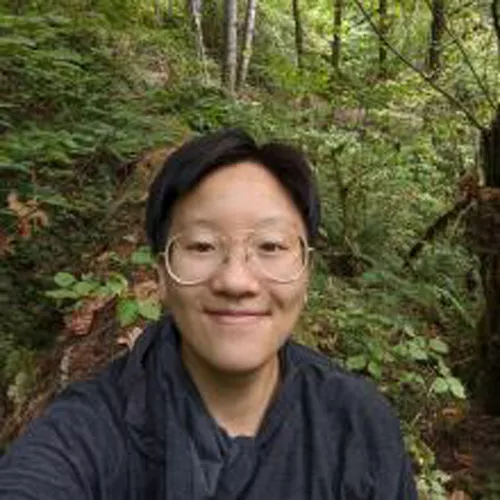
Val Chang's research involves using video-based projection art to build emotional resonance and community conversations around the observed physical impacts of climate change. Her project was an inquiry into our future relationships with water. As the climate changes, rain-on-snow floods (ROSFs}—some of the most extreme floods on Earth—are becoming increasingly frequent in the PNW, causing damage to infrastructure, water supplies and livelihoods. But ROSFs also symbolize water's return to pre-colonial pathways and hydrologic regimes beyond human memory, providing a key opportunity for imaginative climate-adaptation strategies. Val and her team created and projected animations of our region's precarious waterways along with sound reactive visuals and audio of a singing creek onto a forested land and cabin located on traditional homelands of the Ampinefu, Wusi'n, and Yaqo’n People.
Discipline: Geography
Mentors: Samantha Chisholm, Joan Truckenbrod, Jon Bellona

Vaishnavi Padaki studies volatile organic compounds (VOCs) in the ocean. Her project combined data visualization, mandala design and multilayered glass sculptures to convey the role of phytoplankton in the production of VOCs—small gaseous organic compounds that play an essential role in climate regulation. Her work invites us to consider both the beauty of ocean ecosystems and the impacts of climate change on the complicated, delicate relationships between the ocean and the atmosphere.
Discipline: Microbiology
Mentors: James Fox, Jerri Bartholomew

Fang-Yu "Betty" Shen studies the effects of habitat change on birds and investigates how to estimate bird populations more accurately by integrating community science data with professional data. Her project involved a fusion of traditional Chinese and Western art, aiming to find a harmonious balance between ink and color. She created three watercolor panels: one creatively interpreted challenges to collecting data accurately, one illustrated the influence of habitat change and climate change on bird populations and species diversity and one portrayed the benefits of mindful farming systems that support the integral role of birds within the environment.
Discipline: Fisheries, Wildlife and Conservation Sciences
Mentors: Douglas Robinson, Tara Kate Robinson

Anita Spaeth is an artist and arts-integrated educator based in Oregon. Through visual art, photography, and creative writing, her project used a philosophical lens to necessarily complicate the conversation on the ethical and environmental impacts attributed to livestock production and pasture management. She worked with small-scale livestock farms in the Willamette Valley to create a series of images and portraits that illuminate notions of care and interspecies reciprocity.
Discipline: Environmental Arts and Humanities
Mentors: Hannah Gosnell, Kirsi Peltomaki, Tim Jensen
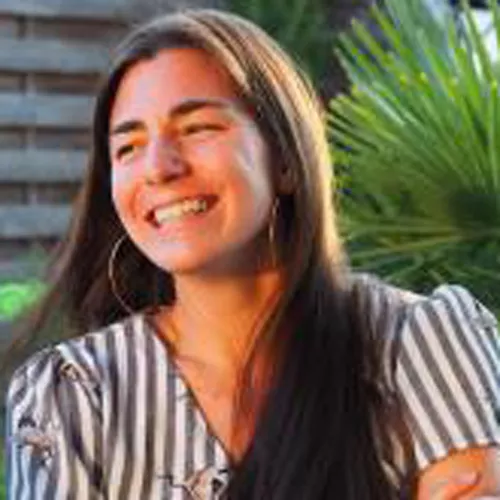
Ali Trueworthy began studying marine renewable energy from an engineer's perspective about seven years ago. Her project explored how changes to the ways we approach and discuss energy can help protect life on this planet. We have attempted to remove complexity from the daunting transition before us and make climate change into a simple problem that can be solved within the confines of colonial and capitalist systems. Her meditations—each beginning with a scientific equation—appeal for a better approach to energy transition that attends to complex questions of power, ecological entanglement and social change. Ali’s work was the subject of a Student Focus feature by the College of Liberal Arts.
Discipline: Mechanical Engineering, Environmental Arts and Humanities
Mentors: Molly Grear, Tim Jensen

